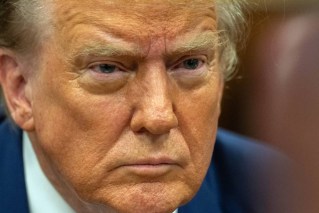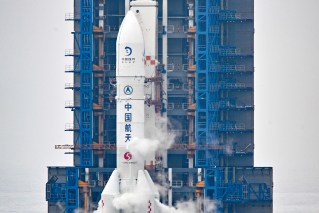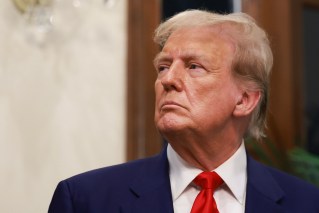South China Sea flotilla challenges China in contested waters


China has laid claim to a swathe of shoals and islands which represent about 90 per cent of the South China Sea. Photo: Getty
A US-led coalition of navy ships sailed through the South China Sea this week in what is yet another sign of growing tensions in the region.
From May 2 to 8, a US missile destroyer, two Indian naval ships, a Philippines patrol vessel, two Japanese warships and a helicopter carrier cruised the waters claimed by China, in a show of unity.
In a statement the US Navy said the operation was routine: “The ships conducted formation exercises, communication drills, passenger transfers and held a leadership exchange.”
Why is this significant?
The combined exercise is a renewed challenge to Beijing, coinciding with US President Donald Trump’s threats to hike tariffs on $US200 billion worth of Chinese goods.
“Professional engagements with our allies, partners and friends in the region are opportunities to build upon our existing, strong relationships,” said Commander Andrew J Klug, captain of US destroyer, USS William P. Lawrence.

Three Australian warships were challenged by the People’s Liberation Army Navy in a ‘robust’ exchange in April last year. Photo: AAP
Japan sent one of its two big aircraft carriers, Izumo, while India deployed its destroyer, INS Kolkata and a tanker INS Shakti.
The joint drills ended on Wednesday.
How is China reacting?
China has no doubt been aware of the activity.
On Monday, two US warships sailed a little too closely to islands in the region claimed by China. That prompted protest from Beijing, which said the action infringed its sovereignty.
China has increasingly been willing to protest foreign militaries in areas that it considers its home territory, including Taiwan Strait and South China Sea.
In an example of China’s growing irritability, the nation issued a complaint to France for having one of its ships pass through Taiwan Strait. The nations have held joint search-and-rescue operations and, politically speaking, are seen as friends.
#USNavy, @IndianNavy, Japan Maritime Self-Defense Force, Philippine Navy sail together, conduct drills in South China Sea: https://t.co/sdhY0iDaQR #NavyPartnerships @US7thFleet pic.twitter.com/YjsZUnjxiw
— U.S. Pacific Fleet (@USPacificFleet) May 9, 2019
Have drills like this been carried out before?
In recent years, the US and its allies, such as the UK and Australia, have increased deployments to the South China Sea even as China has claimed sovereignty over several islands in the water body.
This week’s activity was a first, for this particular group – many of which are neighbours of China – to have all sailed together.
US says activity is routine
The US Navy is downplaying any ideas that the activity for anything other than ‘peacekeeping’.
In a statement they said they routinely conduct such freedom of navigation operations in international waters around the world, even in seas claimed by its allies, without political considerations.
China for its part is also engaging in what it says are routine military operations.
In a further indication of the two nations growing bond, China is preparing to join Russia in a joint naval exercise to practise manoeuvring, communication and perform missile launches.
What is the South China Sea?
The South China Sea is a critical commercial gateway for a large portion of the world’s merchant shipping.
It is bordered by Brunei, Cambodia, China, Indonesia, Malaysia, the Philippines, Singapore, Taiwan, Thailand and Vietnam.
China claims almost all of the strategic South China Sea with Brunei, Indonesia, Malaysia, the Philippines, Taiwan and Vietnam pushing competing claims to parts of the maritime region.
#IndianNavy ships Kolkata & Shakti carry out Group Sail with Naval ships of @JMSDF_PAO, Philippines & @USNavy in the South China Sea from 03 – 09 May 19. The six-day long Group Sail had participation of six combatants from the four participating countries. pic.twitter.com/aI2irPKf95
— SpokespersonNavy (@indiannavy) May 9, 2019
China has been militarising the region for several years now. In 2018, China placed anti-ship cruise missiles and long-range surface-to-air missiles on the contested Spratly Islands, according to a recent Pentagon report.
The US, Japan and India do not have any territorial claims there.
For more information on the South China Sea and its geo-political importance, the Lowy Institute has an excellent overview.
-with AAP








